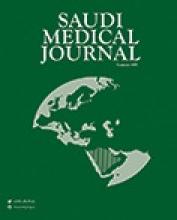Abstract
OBJECTIVE: To evaluate the correction rate of urinary flow rate after posterior urethral valve (PUV) resection for predicting success after operation.
METHODS: This retrospective study was performed between March 2006 and February 2013 at the Department of Pediatric Urology, Akdeniz University School of Medicine, Antalya, Turkey. Of the 67 patients with PUV, 52 patients were enrolled. Physical examinations, urine and blood analyses, uroflowmetry (UFM) including maximum flow rate (Qmax) and average flow rate (Qavg), and post voiding residual urine volume (PVR) were recoded. The UFM, PVR, voiding cystourethrography, serum creatinine levels were recorded in clinical visits. Additional operations were performed if there were symptoms of urinary obstruction. Statistical analyses were carried out.
RESULTS: The mean age was 9+/-2.9 years. The mean follow-up was 10.6+/-4.2 months. There was a significant difference between preoperative and postoperative serum creatinine (p=0.028), Qmax (p=0.001), Qavg (p=0.002), and PVR (p=0.001). Postoperative serum creatinine was significantly positively correlated with postoperative PVR (p=0.024). In logistic regression analysis, success on PUV resection was associated with preoperative Qavg (p=0.016) and PVR (p=0.004), and postoperative Qavg (p=0.039) and PVR (p=0.030). Of the 42 (80.7%) patients, significant improvements in UFM, PVR, and serum creatinine levels were obtained after first operation. In 10 patients, re-operations were performed.
CONCLUSION: Short-term effectiveness of PUV resection may be predicted by changes in UFM and PVR parameters in selected patients.
- Copyright: © Saudi Medical Journal
This is an open-access article distributed under the terms of the Creative Commons Attribution-Noncommercial-Share Alike 3.0 Unported, which permits unrestricted use, distribution, and reproduction in any medium, provided the original work is properly cited.






